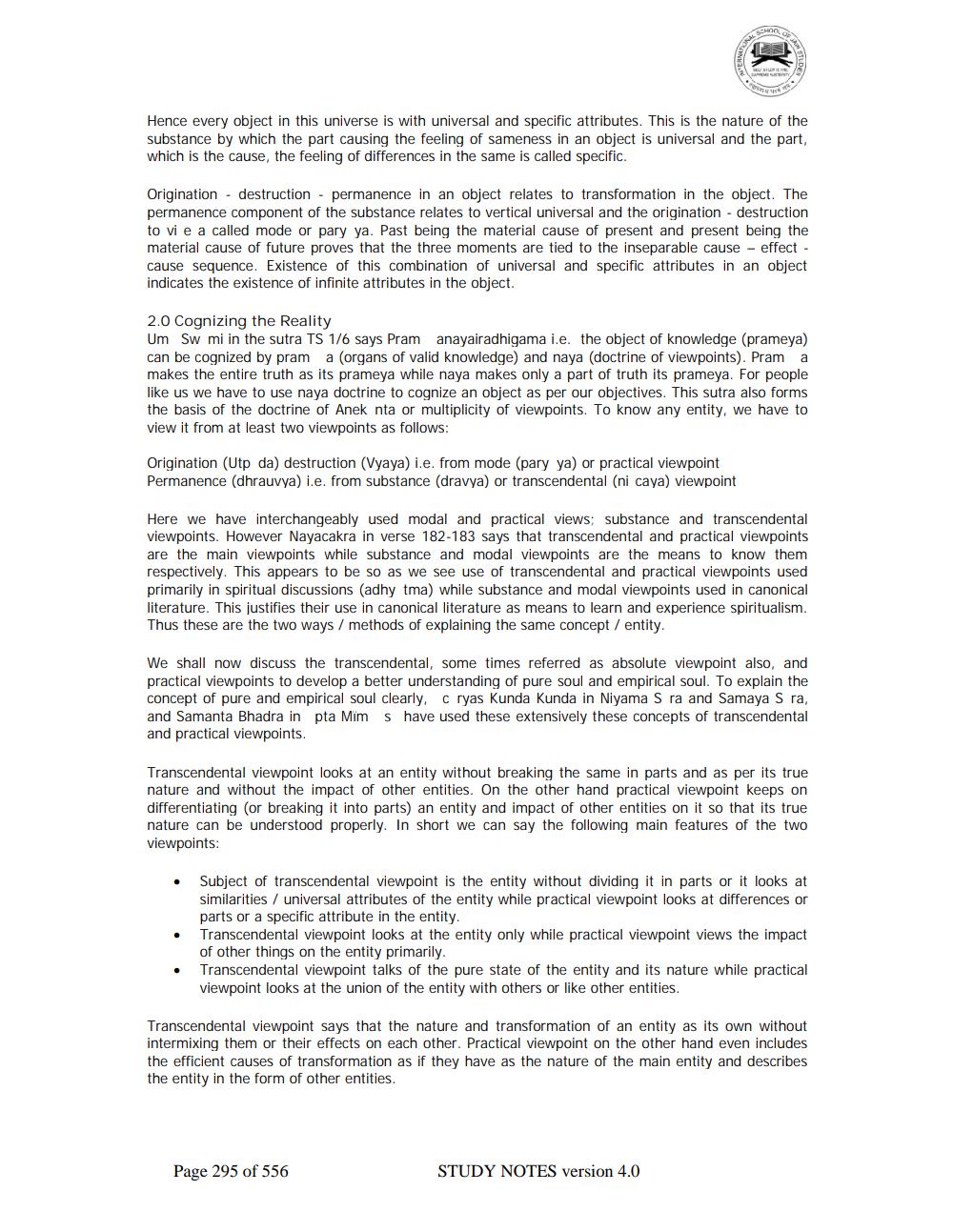________________
FOR THE
Hence every object in this universe is with universal and specific attributes. This is the nature of the substance by which the part causing the feeling of sameness in an object is universal and the part, which is the cause, the feeling of differences in the same is called specific.
Origination destruction - permanence in an object relates to transformation in the object. The permanence component of the substance relates to vertical universal and the origination - destruction to vi e a called mode or pary ya. Past being the material cause of present and present being the material cause of future proves that the three moments are tied to the inseparable cause - effect - cause sequence. Existence of this combination of universal and specific attributes in an object indicates the existence of infinite attributes in the object.
2.0 Cognizing the Reality
Um Sw mi in the sutra TS 1/6 says Pram anayairadhigama i.e. the object of knowledge (prameya) can be cognized by pram a (organs of valid knowledge) and naya (doctrine of viewpoints). Pram a makes the entire truth as its prameya while naya makes only a part of truth its prameya. For people like us we have to use naya doctrine to cognize an object as per our objectives. This sutra also forms the basis of the doctrine of Anek nta or multiplicity of viewpoints. To know any entity, we have to view it from at least two viewpoints as follows:
Origination (Utp da) destruction (Vyaya) i.e. from mode (pary ya) or practical viewpoint Permanence (dhrauvya) i.e. from substance (dravya) or transcendental (ni caya) viewpoint
Here we have interchangeably used modal and practical views; substance and transcendental viewpoints. However Nayacakra in verse 182-183 says that transcendental and practical viewpoints are the main viewpoints while substance and modal viewpoints are the means to know them respectively. This appears to be so as we see use of transcendental and practical viewpoints used primarily in spiritual discussions (adhy tma) while substance and modal viewpoints used in canonical literature. This justifies their use in canonical literature as means to learn and experience spiritualism. Thus these are the two ways / methods of explaining the same concept / entity.
We shall now discuss the transcendental, some times referred as absolute viewpoint also, and practical viewpoints to develop a better understanding of pure soul and empirical soul. To explain the concept of pure and empirical soul clearly, c ryas Kunda Kunda in Niyama S ra and Samaya S ra, and Samanta Bhadra in pta Mim s have used these extensively these concepts of transcendental and practical viewpoints.
Transcendental viewpoint looks at an entity without breaking the same in parts and as per its true nature and without the impact of other entities. On the other hand practical viewpoint keeps on differentiating (or breaking it into parts) an entity and impact of other entities on it so that its true nature can be understood properly. In short we can say the following main features of the two viewpoints:
• Subject of transcendental viewpoint is the entity without dividing it in parts or it looks at similarities/universal attributes of the entity while practical viewpoint looks at differences or parts or a specific attribute in the entity.
Transcendental viewpoint looks at the entity only while practical viewpoint views the impact of other things on the entity primarily.
Transcendental viewpoint talks of the pure state of the entity and its nature while practical viewpoint looks at the union of the entity with others or like other entities.
•
Transcendental viewpoint says that the nature and transformation of an entity as its own without intermixing them or their effects on each other. Practical viewpoint on the other hand even includes the efficient causes of transformation as if they have as the nature of the main entity and describes the entity in the form of other entities.
Page 295 of 556
STUDY NOTES version 4.0




